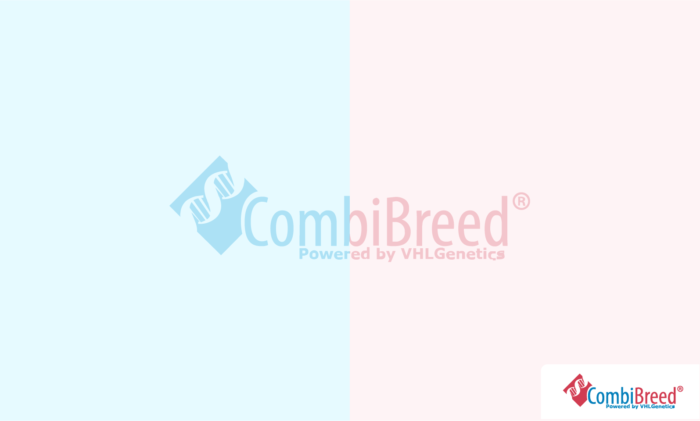
€57,48 €47,50 excl. VAT
Coat colour in dogs is controlled by a wide range of different genes working together.
10 working days
From €5,95 shipping and administration per order (incl. VAT)
Specifications
| Breeds | Wirehaired Pointing Griffon, Australian Cattle Dog, Dalmatian, English Cocker Spaniel, English Springer Spaniel, German Shorthaired Pointer |
|---|---|
| Gene | |
| Specimen | Swab, Blood EDTA, Blood Heparin, Semen, Tissue |
| Mode of Inheritance | Complex |
| Chromosome | 38 |
| Year Published | 2021 |
General information
Coat colour in dogs is controlled by a wide range of different genes working together. These genes are often referred to as ‘loci’. The Ticking, or T-Locus, corresponds to the usherin gene (USH2A), which helps control the development of the dog’s coat pattern. T-Locus mutations in dogs cause the development of alternating areas of white and pigmented hairs, which can result in two distinct patterns: Ticked and Roan. These traits are co-dominant (a dog carrying both the Ticked and Roan mutations will develop a combination of the two patterns), and both are dominant over a clear (unpatterned) coat.
Clinical features
A Ticked coat features pigmented spots in otherwise white areas of the body. These spots tend to be the most common on the legs and muzzle.
A Roan coat features a mostly even mixture of white and pigmented hairs on areas of the body that would otherwise be pure white.
Additional information
Coat colour is an intricate trait that involves a combination of multiple different genes. Testing for a range of different loci will give the most complete prediction of a dog's coat colour genetics.
References
Pubmed ID: 33539602; 33755696
Omia ID: 1216